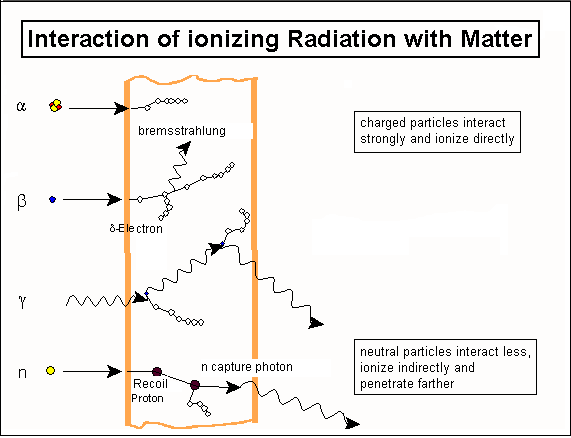Radioactive materials are widely used in our high-tech society. There are medical application, industrial applications, research applications, nuclear power plants and nuclear weapons development. In addition, there is a great deal of radioactive waste left over from past uses. What can be done to protect people from the harmful effects of ionizing radiation?
The damage done by radiation depends on the duration of the exposure, the distance from the source and the amount of radiation being emitted by the source. Radiation protection is working with these three factors to reduce exposure.
Duration of exposure can be reduced by improvement of procedures and good training of the people handling the radioactive material.
Distance from the source can be increased by using remote handling equipment such as tongs, waldos and robots.
Radiation escaping from the source can be reduced by the use of various shielding materials such as lead. The effectiveness of the radiation shielding material is related to both the density of the material and the thickness of the shield. Some elements are more effective at absorbing radioactivity than others.
There are recommended international standards for protecting people from radiation exposure published by the International Commission on Radiological Protection. Most countries have some agency that issues permits to organizations requiring adherence to these guidelines.
Any use of radioactive materials must have a strong justification where the advantages outweigh the disadvantages. There are limits for how much radiation a particular individual should be exposed to. And there is the demand that everything possible be done to reduce the exposure of any individual to the absolutely lowest level possible.
Alpha particles or helium nuclei can be stopped by a single sheet of paper.
Beta particles or high energy electrons can be blocked by a an eighth of an inch of aluminum. Glass, plastic, aluminum, wood or other low density materials are used to block beta radiation because higher density materials will give rise to additional radiation as the electrons interact with their atoms.
Electromagnetic radiation such as x-rays and gamma rays are blocked by dense materials such as lead. Lead is dense enough so that only an inch may be sufficient but other materials must be much thicker. Nuclear reactors utilize thick concrete walls in addition to lead. Ultraviolet light is also ionizing but can be easily blocked by thin layers of clothing, sunglasses or sunscreen ointment.
Neutrons are very penetrating and much more difficult to shield than other types of radiation. Thick dense materials must be used but they can be rendered radioactive by the passing neutrons and cause additional problems for exposure and shielding.
If you are going to be around radioactive materials, be sure that you understand the types and dangers. Follow all instructions to the letter and spend the minimal time necessary for your purpose. Use a dosimeter to keep track of your exposure and pay close attention to what it shows.
